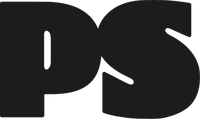“This is *the* smart home gym setup worth investing in due to several features that other smart gyms don’t have."
Get the expertise of a personal trainer and a full gym in your home

Weight that adapts to you
Tonal learns your strength and sets the optimal resistance for every rep, increasing in as little as one-pound increments to keep you challenged as you get stronger.

Get more out of every rep
Science-backed workouts with real-time guidance help you train safely and maximize your effort.
Unlock a new level of
training with membership

training for the whole household
Each membership comes with unlimited accounts, so everyone in your house can tap into a personalized training experience.

access advanced lifting modes
Fast-track your fitness results and build muscle up to 2x faster with advanced lifting modes like Drop sets that automatically adjust the weight, so you never have to re-rack.

training for every chapter of life
Whether you’re just getting started or experienced with strength training, Tonal has something for every member to hit their goals.
What the press is saying

“It’s the first piece of digital weight training equipment I’ve used that makes improving your performance easy.”

"Tonal 2 Has Finally Made Me Like Strength Training"

"I'm a Trainer and Tonal 2 Is the Best At-Home Fitness Machine I've Tried"

"Best Smart Home Gym: Tonal 2"

"Tonal 2 Has Finally Made Me Like Strength Training"
*Truemed is for qualified customers. HSA/FSA tax savings vary. Learn more at truemed.com/disclosures









